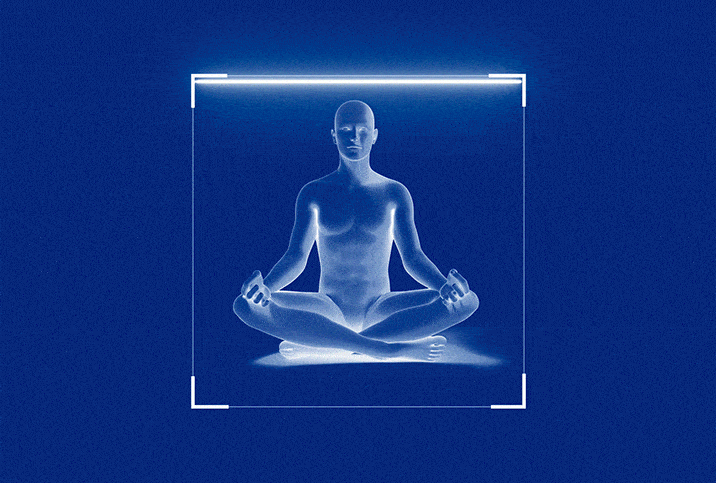The Benefits of Body Scanning Meditation

Body scanning is a form of mindfulness meditation that draws attention to every part of the body in a gradual sequence from head to toes, encouraging the meditator to take note of any pain, tension or other sensations. The practice can yield multiple immediate and long-term benefits, including relieving anxiety, stress and pain, improving sleep, and increasing self-awareness and compassion. It may also assuage cravings for people who smoke tobacco products.
"At each area, for example, your toes, feet and legs, you notice the sensations and direct the breath into and out of the different body regions," said Sarah Woods, a clinical psychologist based in Morpeth, Northumberland, England. "The meditation finishes by letting the breath move through the entire body from head to toe. When noticing sensations, we do so without judgment, gently noticing any thoughts or distractions and refocusing on the body."
Sarah Lee, a psychotherapist based in Manchester, England, said the practice can involve tensing and relaxing specific muscles, known as progressive muscle relaxation.
Woods and Lee use body scanning meditation in conjunction with other psychotherapeutic techniques, such as traditional talk therapy, to help patients cope with and overcome various challenges. However, it is possible to reap benefits of body scanning with solo, at-home practice.
Mental issues can cause physical symptoms
By heightening bodily cognizance, body scanning may increase understanding of how psychological ailments manifest in physical form and vice versa. Research indicates that mental conditions such as depression and chronic stress can have physical implications, including increased pain and fatigue and a weakened immune system. But Woods and Lee said the psychological roots of bodily discomforts aren't always immediately apparent.
"Many people with mental health struggles experience unexplained medical symptoms and/or pain," Lee said. "Fear, anxiety and beliefs about pain can unintentionally perpetuate or exacerbate the pain.
"Pain can also be an attempt by the body to distract someone from their emotions; instead, they focus on the physical pain and the emotions remain hidden," Lee continued. "This is really a misguided attempt at protection and is often formed when someone is too young to understand that this isn't an effective long-term approach. It was the best available way to deal with the situation at the time."
Reducing physical tension and improving mental health may reduce some discomfort over time.
Likewise, physical conditions, including chronic pain and other illnesses, can cause or exacerbate mental health issues. The concurrence can create a "vicious cycle," Woods said.
"Chronic pain is exhausting, isolating and often poorly understood, which means clients are disbelieved or dismissed and told the pain is in their heads," Lee said. "There is a lot of overlap in how physical and emotional pain are processed in the body."
Body scanning meditation does not relieve pain in and of itself, nor is it intended to do so. However, reducing physical tension and improving mental health may reduce some discomfort over time. Also, understanding how thoughts and beliefs can affect physical sensations can help a person cope with pain more productively.
"Staying aware of and breathing into all regions of the body can change our relationship to the discomfort. It helps us notice it and make space for it," Woods explained.
Multiple studies indicate psych-based treatments, including acceptance and commitment therapy, cognitive behavioral therapy (CBT) and mindfulness practices, can effectively treat chronic illnesses when used as part of a holistic treatment plan.
Helping with trauma
Certain psychological disorders, such as post-traumatic stress disorder (PTSD), can impact a person's physical sensations and bodily perception. Disassociation, wherein a person mentally disconnects from their body, is common in individuals who have experienced trauma.
"They do this because it wasn't safe to stay in their bodies, and their brains tried to protect them by shutting off," Lee said. "In theory, we should be able to return to our bodies once the danger has passed. But because in trauma the brain has difficulty understanding that the trauma has finished, it can get stuck in a loop and shut off when it experiences a trigger. When people are very traumatized, the brain may believe it is in a state of constant danger and find it very difficult to stay in the present moment and, therefore, in the body."
Lee and Woods both agreed body scanning meditation, under the guidance of a qualified professional, may help people with PTSD or other trauma-related conditions reconnect with their bodies in a positive way—after all, negative emotions aren't the only ones felt in the body.
"By cutting off intense, unpleasant sensations, individuals may also blunt positive ones, like joy and happiness," Woods said. "By recuperating the mind-body connection and learning to cope with unpleasant feelings, meditators may experience a broader spectrum and intensity of emotions."
A how-to guide for body scanning meditation
To carry out body scanning meditation at home:
- Get comfortable. Lying down is best, though you can perform the meditation sitting up if desired.
- Close your eyes. If you feel comfortable doing so, this will help eliminate distractions.
- Breathe deeply. Allow your breathing to slow down, inhaling from the belly.
- Focus on your toes. Start the scan with your feet, observing any sensations you feel and acknowledging any associated thoughts or emotions. Breathe into any uncomfortable feelings and visualize the discomfort leaving your body and dissipating into the air.
- Scan the rest of the body. Slowly move to the next body part, then the next, repeating the process above. Notice points where you're holding stress and release tension where you feel it.
"Since body scans help develop awareness in the body, they can be helpful for many different issues," Lee explained. "I recommend clients start with very short practice and notice whether this is helpful or overwhelming. We want the client to succeed, so often we need to start with very short scans or even just noticing the body part that feels safest, [for example,] toes. Understanding your emotions and body can be helpful for chronic pain, anxiety, depression and sleep issues. These issues are often interconnected, so you might find working on one symptom also improves another."


















